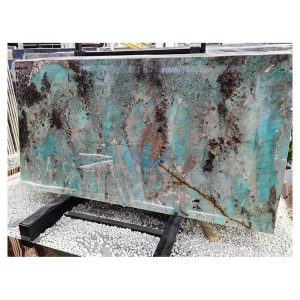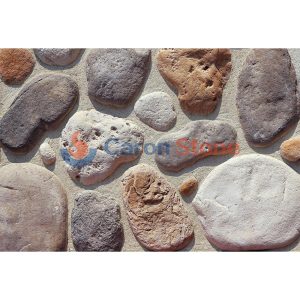
Comparative Study On Environmental Performance Of Artificial Stone And Natural Stone -
In the world of architecture and interior design, artificial stone and natural stone each shine with their own unique brilliance. While artificial stone has attracted a lot of interest for its customisable appearance and production process advantages, real stone has become very popular for its inherent beauty and sturdiness. Today, we will take a deep look at the differences in the environmental performance of these two materials, reveal their roles in green buildings, and see which one can come out on top in the field of environmental protection.

Green Quartzite Brazil Luxury natural stone Amazonita Green Granite
Natural Stone Environmental Performance:
Early thousands of years ago, architecture and adornment made use of natural stones including granite and marble. Their environmental qualities mostly show in the following:
1. Naturalness and durability of resources: Natural stone comes from the depths of the earth, and the mined stone can be used directly in construction without too much processing. This natural approach of mining and use lowers energy consumption. Simultaneously, natural stone is quite durable and typically used for decades or even hundreds of years, therefore lowering the frequency of replacement in long-term use and hence the consumption of resources.
2. Recyclability: Natural stone has high recyclability. Stone waste can be recycled and used as raw components for other building materials during rehabilitation or demolition, therefore lowering the need for fresh resources.
3. Ecological impact: Although the mining of natural stone has a certain impact on the environment, such as the interference of mining on the ecosystem, modern stone mining companies have gradually adopted more environmentally friendly mining technologies and measures, such as reducing damage to the surrounding environment and adopting more efficient energy utilization methods to reduce the negative impact on the environment.
Environmental efficiency of synthetic stone
Mainly composed of synthetic resin, stone powder, and other mineral components, artificial stone reflects environmental performance mostly in the following aspects:
1. Effective use of resources: Often wasted in the mining of natural stone, certain industrial waste and byproducts can be used in the manufacturing process of artificial stone. Consequently, the manufacture of synthetic stone promotes resource optimization and helps to lower waste.
2. Production process controllability: Artificial stone may be produced quite under control as compared to natural stone mining. By means of low volatile organic compounds (VOC) and energy consumption reduction, this controllability helps producers to implement additional environmental protection actions during the manufacturing process.
3. Maintenance and cleaning: The surface of artificial stone is smooth and easy to clean, and no strong chemical cleaners are required, which reduces pollution to the environment. Furthermore, artificial stone’s color and pattern are consistent, not easily fading, and it does not require regular repainting, thereby lessening the environmental impact during maintenance.
Artificial stone is usually regarded to have a lower life cycle environmental impact since its manufacturing process can better control energy consumption and waste, while natural stone has a rather large environmental impact due of high energy consumption and waste generation during mining and processing.
In general, natural stone and artificial stone each have their own environmental advantages and disadvantages. With its natural resources and great durability, natural stone has long-term benefits in environmental conservation; yet, it is impossible to overlook the effects of the mining technique on the surroundings. While used and maintained, artificial stone has minimal effect on the environment; it can effectively use resources and cut waste during manufacturing. Nevertheless, the environmental benefits of fake stone also depend on the environmental friendliness of the materials and technology applied in the manufacturing process.

GB-E01 China faux artificial rounded river rock pebble wall stone
When choosing which stone to use, consumers and architects should comprehensively consider environmental factors, including sustainable use of resources, environmental impact during production and use, etc. Whether natural or synthetic stone, the true approach to be ecologically friendly is how to reduce the effects on the surroundings while using these materials to advance the construction of green structures.




